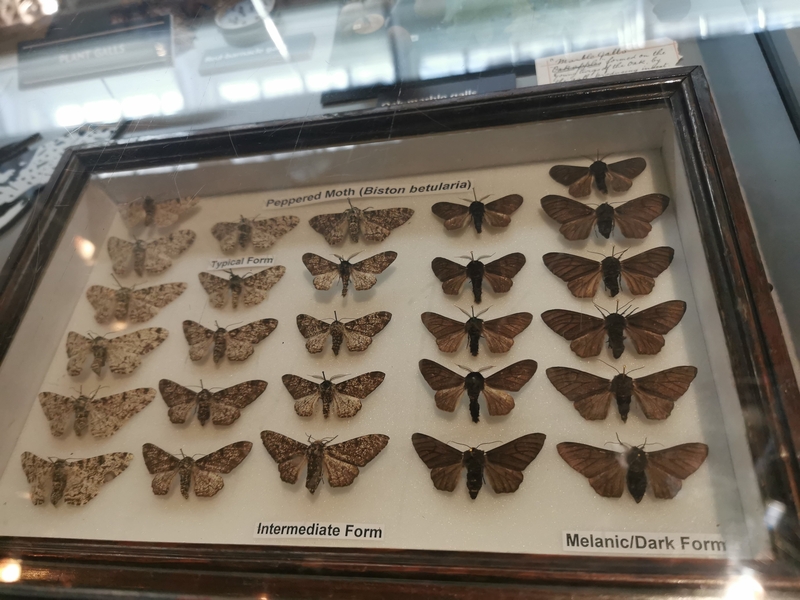Jonathan Schofield on why the life of a small insect makes fools of 'creationists'
There’s a small creature in Manchester Museum that is one of the best examples of Darwin’s theory of evolution and natural selection. This is the peppered moth.
That is why the anti-evolution lobby attacks the peppered moth story. They are frightened that too many people will be able to understand it.
To quote: ‘In the early 19th century, the peppered moth was known to most naturalists, including Charles Darwin, as a predominantly white-winged moth liberally speckled with black.
‘Then in 1848, as the mills covered swathes of northern England in sooty black smoke, a black variant of the moth was discovered in Manchester. By 1895, 95% of the Mancunian peppered moths were black. This dark form spread across industrial Britain until the Victorian entomologist JW Tutt suggested that the prevalence of the dark form of the moth was due to it being better camouflaged on dark sooty surfaces than the lighter variant.
‘Following the 1956 Clean Air Act, the black form of the moth began to decline with the return of the white form which was bettered camouflaged on lichen-covered tree bark.’
In other words before industrialisation the pale peppered moth was not as predated upon as its darker relatives because it matched the natural surroundings. Once industry took over pale moths stood out on smoke-blackened tree trunks and branches and was snaffled up by birds and other predators. Thus, through natural selection, the darker moths became dominant.

This simple and obvious cause and effect has been called into question by creationists and intelligent design proponents as too simple.
However in 2014, after seven years of study, Mike Majerus, Professor of Evolution at Cambridge University concluded that the peppered moth was, after all, ‘an example of Darwinian evolution.’ He probably won an award for patience as well.
“The peppered moth story is easy to understand," Majerus said, "because it involves things that we are familiar with: vision and predation and birds and moths and pollution and camouflage and lunch and death. That is why the anti-evolution lobby attacks the peppered moth story. They are frightened that too many people will be able to understand it. If the rise and fall of the peppered moth is one of the most visually impacting and easily understood examples of Darwinian evolution in action, it should be taught. After all, it really does provide proof of evolution."
Below is a slider image of Manchester Art Gallery cleaned and spruced up together with one mucky from smoke pollution. That's what those peppered moths had to put up.
Jonathan Schofield is the editor of Manchester Confidential and offers tours and talks across the region. His next walks can be found. His books about Manchester are available here.
If you liked this story you will like:
Strange city (1): The football stadium with a railway line running through
Strange city (2): A forlorn Frenchwoman and the missing city
Strange city (3): George Psalmanazar, the conman
Strange city (4): the dead flood through the city
Get the latest news to your inbox
Get the latest food & drink news and exclusive offers by email by signing up to our mailing list. This is one of the ways that Confidentials remains free to our readers and by signing up you help support our high quality, impartial and knowledgable writers. Thank you!
















